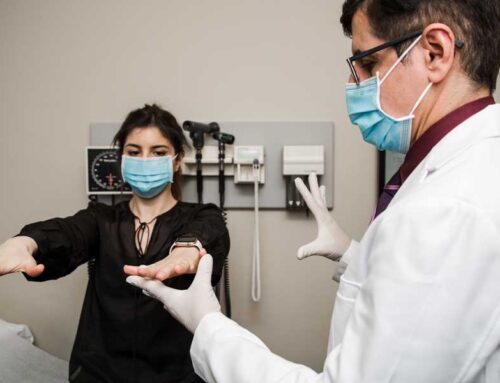A simple fall, in older adults, could be potentially life-altering. Even by just tripping on a rug, you could break a bone, which can lead to more serious long term problems, and potentially disability.
More than one in four people ages 65+ fall each year. You are not alone. However, many falls can be prevented.
The fear of falling in older adults can be real. Many avoid activities like walking and exercising because of this fear. Staying active is important, so don’t let this fear take over your life.
So, how can you prevent falls? Staying active is one of the most important ways. Regular exercises makes your muscles stronger, and keeps your joints and ligaments flexible. This can prevent the severity of the after-effects of a fall, since your muscles are stronger and your bones break less easily.
- Yoga, pilates, and tai chi can also help improve balance, which is key in preventing falls. Lifting light weights and using resistance bands can also build strength.
- Have your eyes and ears tested regularly. Even small changes in sight and hearing have been linked to an increased risk in falls.
- Find out about the side effects of medications you may take. If they make you sleepy or dizzy, tell your doctor immediately.
- Stand up slowly. Getting up too quickly can cause your blood pressure to drop, making you less balanced.
- Use an assistive device, such as canes and walkers. These can greatly reduce the risk of falls. Consult your doctor to ensure that your devices are the right size for you.
- Keep your hands free. Refrain from carrying heavy bags.
If you do fall, stay as calm as possible. Get help–if you are hurt or unable to get up on your own, call 911. Be prepared by always keeping your phone with you at all times. Emergency response systems are also great, as you can push a button on a necklace or watch to get immediate help.
If you are able to get up on your own, do not move quickly. If you can, roll over onto your side and rest while your body and blood pressure adjust. Then, if possible, slowly get up on your hands and knees and crawl to a chair. Remember, stay calm.
Finally, keep your bones healthy. Make sure you get enough calcium and vitamin D. Keeping your bones strong and staying active can help prevent serious injury after a fall.
Sources:
“Falls and Fractures in Older Adults: Causes and Prevention.” National Institute on Aging, U.S. Department of Health and Human Services, https://www.nia.nih.gov/health/falls-and-fractures-older-adults-causes-and-prevention.



